Consultations: Children and youths
Five principles about how to have good video consultations in your clinical practice
User experiences from children and youths in mental health care.
Click on the boxes below to explore the five principles about good video consultations.
- Provide good information about video consultations.
- Meet in person at first, or as soon as possible.
- Talk about what might be difficult or different in a video consultation.
- Check if the youth wants to have a combination of in-person and video consultations.
- Take the youth's school day into account when planning consultations. Some youths can join a consultation while at school, in order to minimize the number of missed classes.
- As a therapist, schedule consultations for the best possible time, e.g. during the last period of the day so that the youth can leave school afterwards.
- Video consultations are often shorter than in-person consultations. Be aware of length and content.
Examples of applying the principle


- Provide instruction about the technology and digital meeting rooms you will use.
- Make sure the youth and their next of kin receive instruction.
- Meet in a safe and user friendly digital meeting room.
- Not everyone has the necessary equipment and Internet access (preferably Wi-fi). Look into this before you begin.
- Find solutions to potential problems, e.g. continue the consultation over the phone.
Examples of applying the principle


- A requirement for video consultations is that the youth has access to an appropriate and safe location. Make sure that this is the case.
- When video consultations are held at school, make sure that the youth can reserve a soundproof room.
- Some youths cannot be at home during consultations. Facilitate this if necessary.
- Who is in the room? Do your best to make sure the youth is alone. In some cases a secret code can be helpful when checking if the youth is alone.
- Some youths are uncertain if their therapist is alone. Make sure that the youth can see the entire room you are sitting in.
Examples of applying the principle



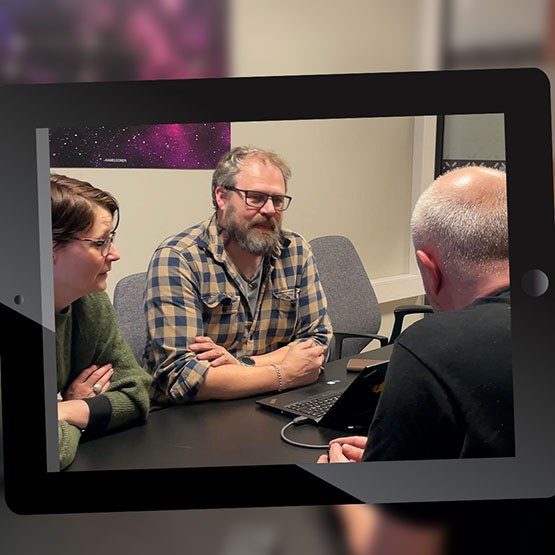


- Be aware of your body language.
- Angle your camera so that it focuses on your face and eyes.
- Make sure the youth can hear you. Sit close to the microphone and think about where you sit. Do not sit close to an open window, for example.
- Eye contact gives a feeling of closeness. Look into your camera to show the youth you are listening.
- Body language and facial expressions are difficult to observe. The screen can make it easier to hide symptoms and how one is feeling.
- Dare to be quiet. Reflect about: Why is silence in a video consultation different than an in-person consultation?
- Illustrations can make it easier to concentrate and understand the discussion. You can share your screen or point the camera at a whiteboard or notepad.
Examples of applying the principle



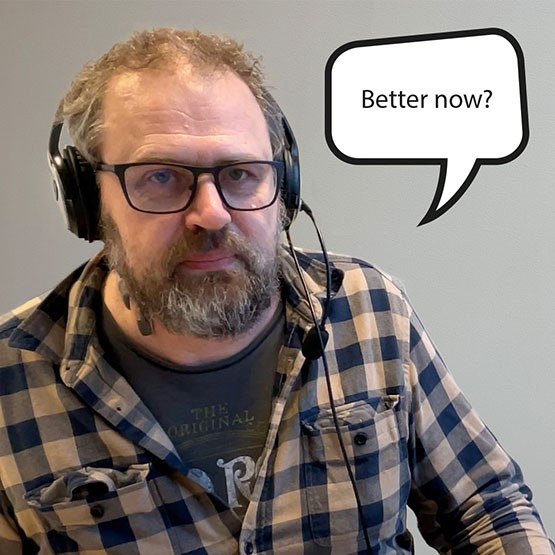

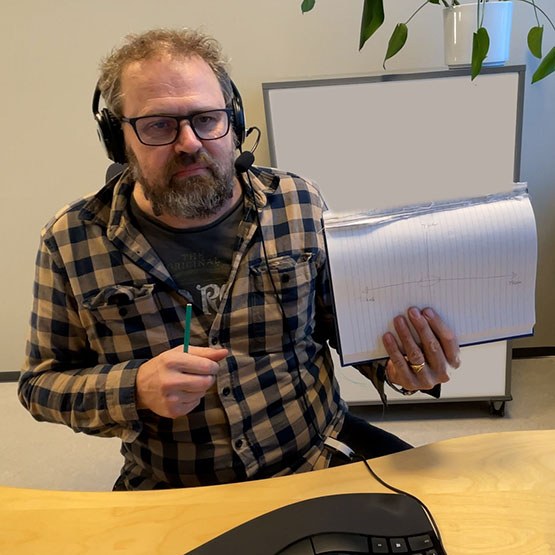
- It is difficult for to be active in an online meeting when you are the only one online and everyone else is sitting in the same meeting room.
- The youth should sit with their therapist. Or everyone should join from their own computer.
- Hybrid meetings require clear leadership and structure, as well as active involvement of everyone and especially the youth.
Examples of applying the principle

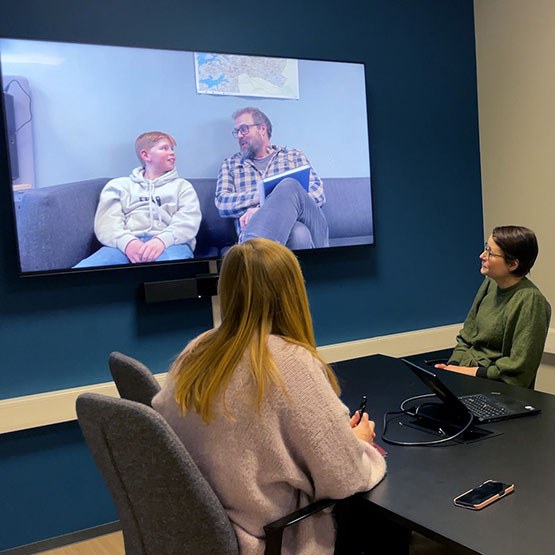
Find five errors in the pictures below of the therapist and the youth.
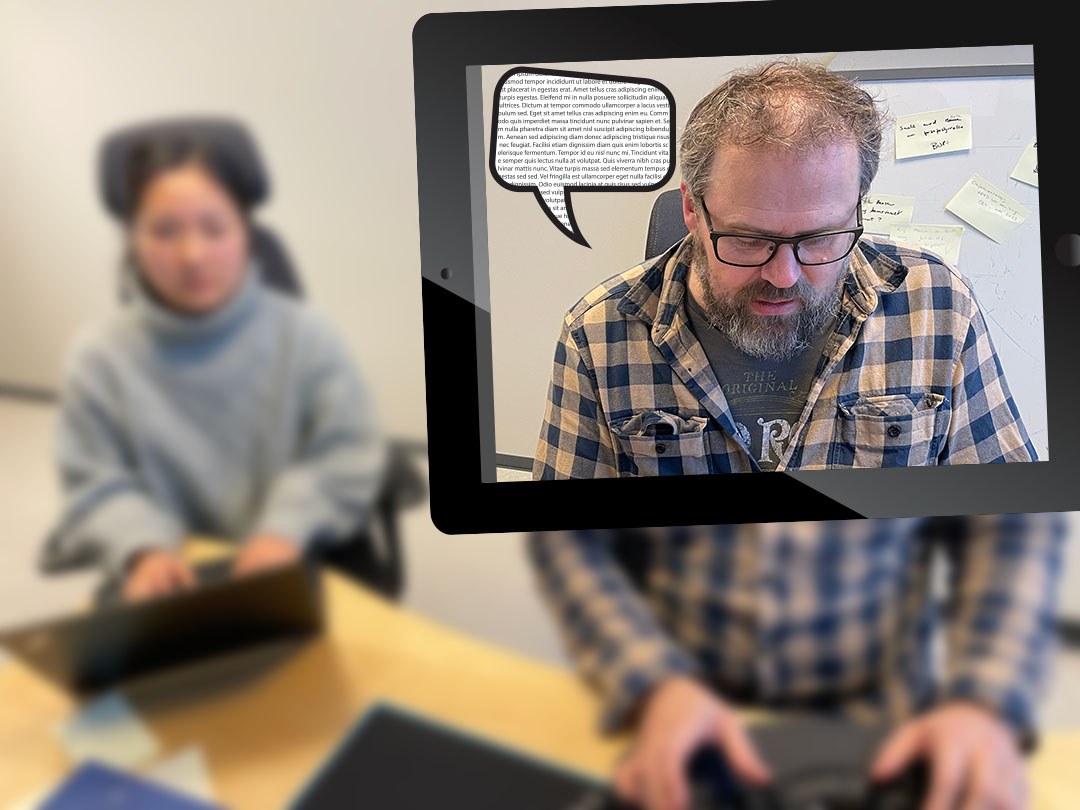
Solution

- Someone is sitting where the camera cannot see them.
- The therapist is talking a lot and quietly.
- The therapist is not looking at the camera.
- The background is chaotic. Even worse, there is sensitive information written on the notes behind the therapist.
- The therapist is typing a lot during the consultation.

Solution
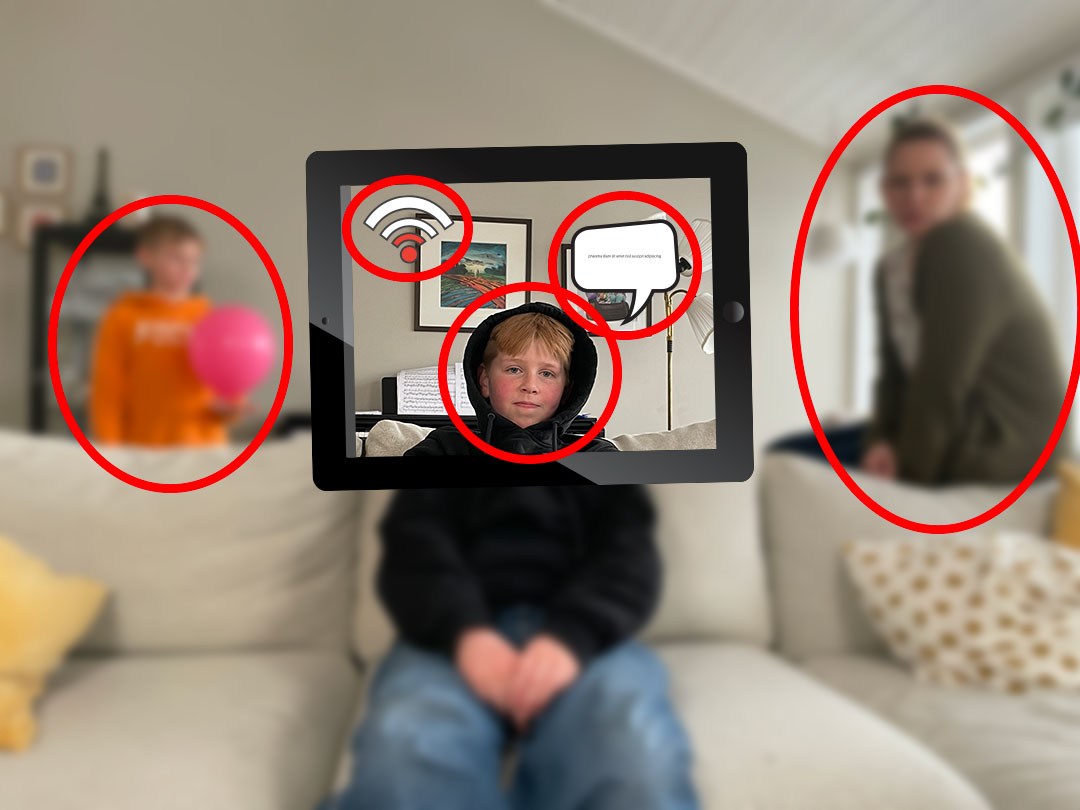
- A sibling is playing in the same room where the youth is participating in a video consultation.
- Poor Wi-fi.
- The youth is sitting far away from the camera or the camera is angled poorly.
- The microphone cannot pick up what the youth is saying. They are talking quietly and not saying much.
- Someone is following the conversation without the therapist's knowledge. The youth cannot speak freely.
For more information about this article, contact: Monika Knudsen Gullslett
The content on this page is based on findings from the research project Videokonsultasjoner i psykisk helsevern - Brukere og pårørendes erfaringer når videokonsultasjoner overtar for fysiske møter.
The content on this page is sponsored by the Norwegian Centre for E-health Research, Northern Norway Regional Health Authority and Norway Grants.
Relevant publications
- Nærhet og omsorg på skjerm
- Fremskritt for e-helse gir også digitalt utenforskap
- Therapists' Experience of Video Consultation in Specialized Mental Health Services During the COVID-19 Pandemic: Qualitative Interview Study
- Implementing and Learning to Use Video Meetings in Mental Health Hospital Departments